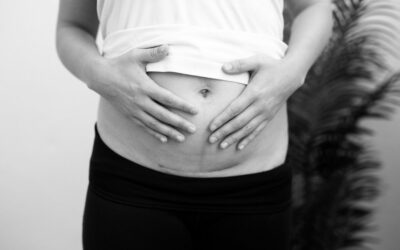We frequently get questions about when it’s safe to return to Crossfit after having a baby. That is often a hard question to answer, or rather there are many factors that go into that answer. Let us help shed some light on when and how to return to Crossfit postpartum.
When is it safe to return to Crossfit postpartum?
To start, there is the length of time required for proper healing.
A 2014 study done by the NIH found that postpartum health problems can occur up to 18 months after delivery. These problems may potentially negatively affect the woman’s overall health long term.
What Does This Mean for Me?
Several things will need modification in the beginning. It will be many weeks before you should be participating in a class.
Keep in mind this timeframe may be different. Your prior fitness level, level of injury sustained during delivery (if any), and other factors may change your personal timeline.
Risk Factors To Consider
Some factors that may slow your return to exercise postpartum or put you at increased risk of injury include:
- A return prior to 3 months postpartum.
- Connective tissue hypermobility disorder such as Ehlers Danlos.
- Increased connective tissue laxity due to hormonal changes from breastfeeding
- Psychological issues, such as postpartum anxiety or depression, that may affect determining appropriate intensity and duration of activity.
- A cesarean birth or perineal tearing with a vaginal delivery.
- Relative energy deficiency in sport.
Itching to Get Back Into Crossfit Postpartum?
For many Crossfit athletes, the gym is where we go to decompress, engage with like minded people, and to feel good.
My best recommendation is to stay home for a minimum of 4 weeks.
Spend the first 2 weeks resting and doing minimal activity. At 2 weeks you can begin walking and working on very light mobility and core work. This can include kegels, gentle TA (deep ab) activation and breath work.
At 4 weeks postpartum, you can return to the gym. But this does not mean you can participate in a class, strength training or a metcon.
Do Your Pelvic Floor Exercises
Your postpartum Crossfit return should be slow and gradual. For your sanity, you can do your core, mobility and pelvic floor exercises in the gym. This is especially ideal if your box has set “open gym”class times.
Many of our patients start going to their local box and doing their “homework” from therapy. This often includes breathwork in various positions to get your pelvic floor and deep abs used to activating and relaxing again. It also usually involves some mobility work.
This is a great time to break out that foam roller and lacrosse ball you have been avoiding (wink wink).
This is also a great time to start working on strict strength and foundational movements. However, this does not mean gymnastics or barbell movements.
Remember, we are using this time to get back into the gym for our mental and emotional well being. We are not returning to classes.
The strict work we are referring to is banded shoulder work and potentially banded hip work.
Another great thing to work on is retraining your breathing mechanics. Postpartum breath work with HIIT looks a lot different than pre pregnancy.
We need to be extremely mindful about the pressures in our abdominal cavity. We want to breathe in a way that will limit an excess of pressure in our abdomen during movement. This will limit the risk of diastasis recti and pelvic organ prolapse as our tissues continue to heal.
What to Do When Your Pelvic Floor & Core Strength Is Adequate
Ditch The Lifting Belt to Strengthen Your Pelvic Floor
The belt is used to improve trunk rigidity and stability with heavy lifts by increasing the pressure in the abdominal cavity.
The belt is also used to cue us to puff out our abdomen. This is the opposite of what we should be doing when we return to crossfit postpartum.
Both of these things put negative stress on the connective tissues of our abdomen and pelvic floor. This can ultimately lead to diastasis recti, pelvic organ prolapse, and stress urinary leakage.
It’s best to be safe a ditch the belt when returning to Crossfit postpartum.
Breathe Properly To Reduce Risk of Injury to Your Pelvic Floor
We can reduce our risk of diastasis recti and pelvic organ prolapse by learning how to breathe properly during our lifts. When weight gets heavy we sometimes have a habit holding our breath. We may have even been coached to breathe this way to improve our trunk rigidity.
Take a squat, for example. We typically breath hold on the way down, and then use an explosive exhale on the way back up to standing.
While this breathing technique might seem beneficial, it can actually be detrimental to our postpartum body. This breath hold significantly increases intra-abdominal pressure.
Focus On Proper Pressure Management to Protect Your Pelvic Floor
To ensure proper pressure management and activation of the pelvic floor with our lifting, we always want to exhale with exertion. Therefore, anytime we are lifting a load or going into a movement, we want to exhale.
This will decrease the pressure in our abdomen, and will cue our pelvic floor and transversus abdominis (deep core) to activate. This will help stabilize our trunk and pelvis, and limit any unwanted strain on our pelvic floor or abdomen. Ultimately, it will reduce the risk of pelvic organ prolapse and/or diastasis recti.
So, the next time you go to your local box, modify your breathing. If you experience
- pelvic heaviness or pressure
- urine leakage
- doming or coning in your abdomen
- pain
Scale back movement, weight, or speed, and let your body adjust before increasing once again.
Avoid Kipping
You’ll also want to avoid kipping for at least 6 months. Kipping is a high velocity activity that requires a significant demand on the muscles of our core and pelvic floor. What that means is that we are very rapidly and maximally loading these tissues.
When muscles are recovering from injury or surgery, they cannot meet all of these demands at once. Therefore, they need to be retrained by beginning with the least intensive type of activation and only moving on once efficient.
In terms of the difficulty of types of muscle recruitment, the order is typically as follows (easiest to hardest):
- isometric (like a glute squeeze)
- concentric (like a bicep curl)
- eccentric (slowly lowering out of a bicep curl)
- plyometrics (jumping squats or kipping movements).
While we might think kipping is easier because it is using momentum, it actually places a higher demand on our muscles.
You’ll need to do strict movements with a band until you are proficient without one. The wonderful thing about bands is that you can gradually reduce the amount of assistance you are getting. This allows for a gradual return to strict movements. You should only move onto kipping once you can perform the movement strictly.
Scale Back Barbell Movements
The same will apply to barbell movements. You will want to scale back to a weight that is considerably less than your previous max.
You will want to choose a weight that allows you to perform the movement for several reps without
- breakdown in form
- pelvic pain or heaviness
- stress urinary incontinence (leakage)
- coning or doming along the middle of your abdomen
Strength: you will likely be able to go slightly heavier as you will be going at a slower speed.
Metcons: decrease weight. You can also break the reps more frequently, and slow your speed considerably with barbell cycling.
Box jumps, wall balls and burpees: Break up reps and slow your speed when needed
Returning to Crossfit after C Section
Returning to crossfit after c section is returning to crossfit after major abdominal surgery, and should be done slowly and safely.
We recommend making sure your pelvic floor and core are properly strengthened before returning to a WOD. Take the time to restrengthen your core and abdominals after a c section before returning to avoid problems down the line.
____________________________________________________________________________________________________
Are you currently pregnant or planning to conceive? If so, make sure to download my FREE resource — How to Prepare Your Pelvic Floor & Core for Childbirth + 8 Must-Dos for C-Section and Vaginal Deliveries.
____________________________________________________________________________________________________
Some links may be affiliate links. The products we recommend are products we use or recommend to clients.





